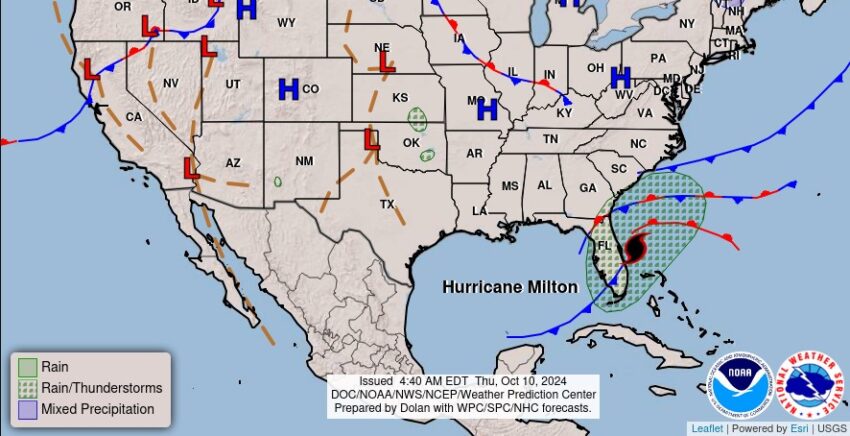| Listen to our audio presentation: History of the US Supreme Court |
Hurricane Milton has ravaged Florida, leaving 14 people dead and causing widespread destruction. Making landfall as a Category 3 storm near Siesta Key in Sarasota County, Milton brought with it catastrophic winds, heavy rainfall, and a devastating storm surge. The storm unleashed over 28-foot waves and spawned a series of deadly tornadoes across the region.
St Lucie County was hit particularly hard, where six residents of a retirement village were tragically killed by tornadoes. These twisters struck within a short 20-minute window, leaving the area in shock and devastation. According to The Independent, a total of twelve tornadoes were confirmed during the storm, tearing through communities and damaging infrastructure.
In St. Petersburg, fierce winds caused a crane to collapse onto the Tampa Bay Times building. Tropicana Field, home to the Tampa Bay Rays, also sustained damage, with its roof suffering significant destruction. Meanwhile, millions of Floridians faced the storm without power—more than 3.3 million homes and businesses lost electricity, with the west-central region being the most affected.
Evacuation orders were issued across the state, but not everyone heeded the warnings. Bradenton Police Chief Melanie warned of the grim reality that awaited emergency responders: “What we’ll probably be finding in the morning are bodies,” she told BBC Radio 4. Unfortunately, her words echoed the heartbreaking aftermath that many feared.
As WESH 2 reported, by Thursday evening, Hurricane Milton had weakened to a Category 1 storm as it moved off Florida’s east coast and into the Atlantic. The National Hurricane Center (NHC) later downgraded it to a post-tropical cyclone. Despite the downgrade, residents in the northeast part of Florida are still experiencing moderate to heavy rainfall, with lingering storm surges continuing to pose a threat.
According to the National Oceanic and Atmospheric Administration (NOAA), recovery efforts in Florida will be challenged by ongoing flooding and high water levels. The northeastern part of the peninsula remains under a Marginal Risk for excessive rainfall, raising concerns about flash flooding. Residents are being urged to remain cautious and avoid flooded areas.
While Florida begins the daunting task of assessing and repairing the damage, weather patterns across the U.S. are also shifting. An upper-level trough over the Northeast and additional storm systems in the Midwest and Pacific Northwest are forecasted to bring scattered rain showers over the next few days.
Hurricane Milton’s rapid weakening doesn’t diminish the severity of its impact. Floridians are just beginning to comprehend the full scope of the storm’s destruction, and recovery will likely take months. Communities across the state are now focusing on rebuilding and supporting those who lost homes, businesses, and, tragically, loved ones.

